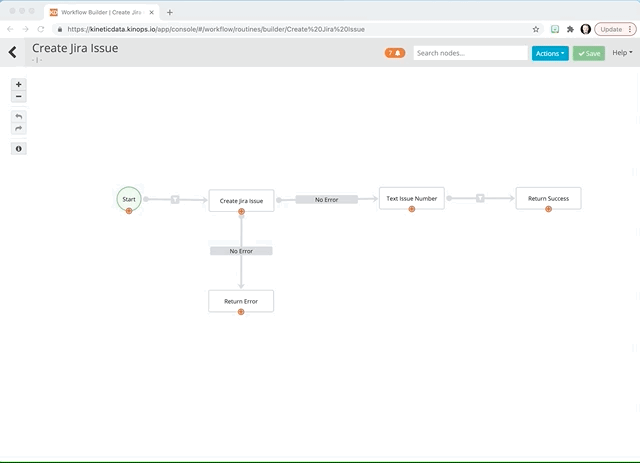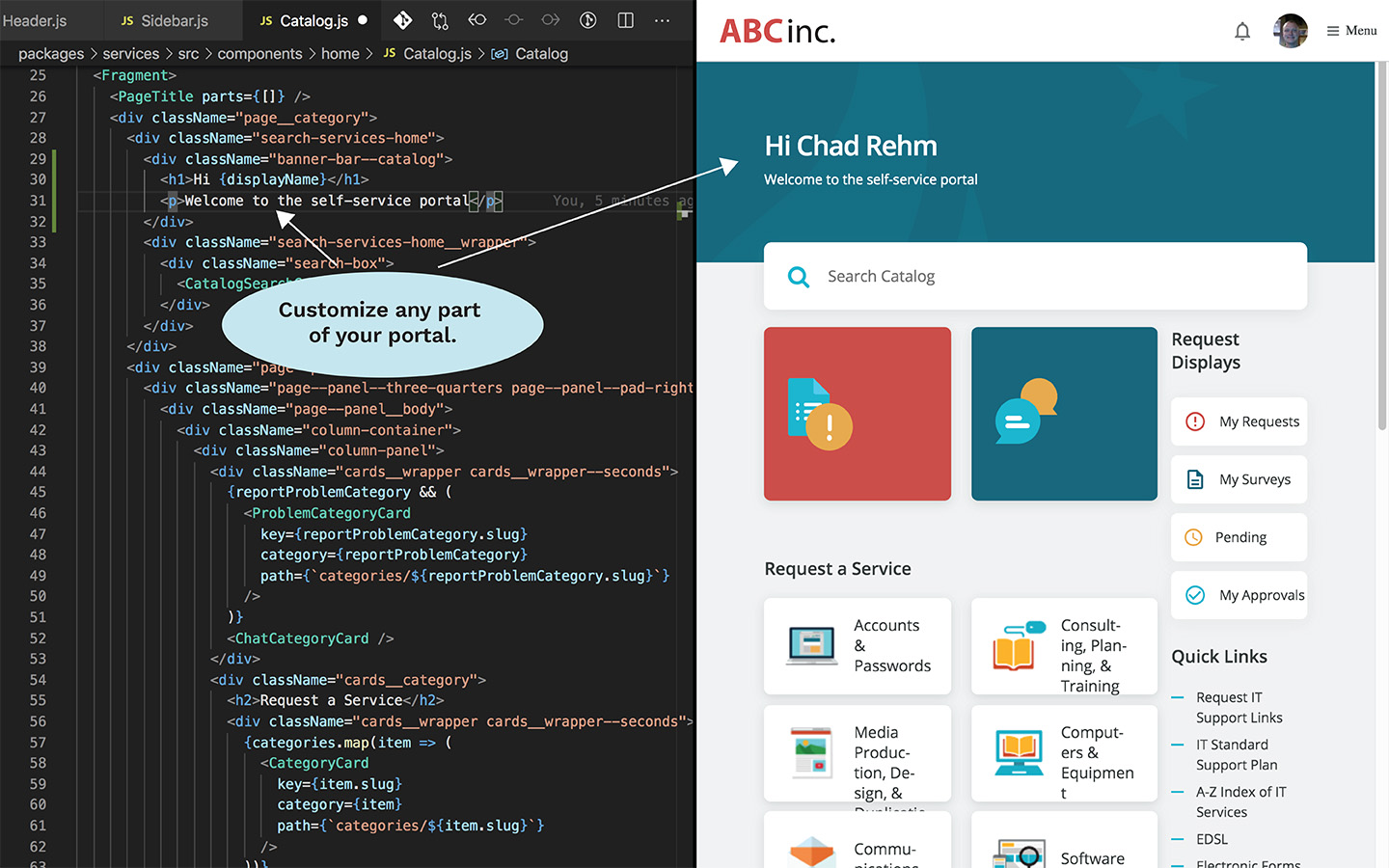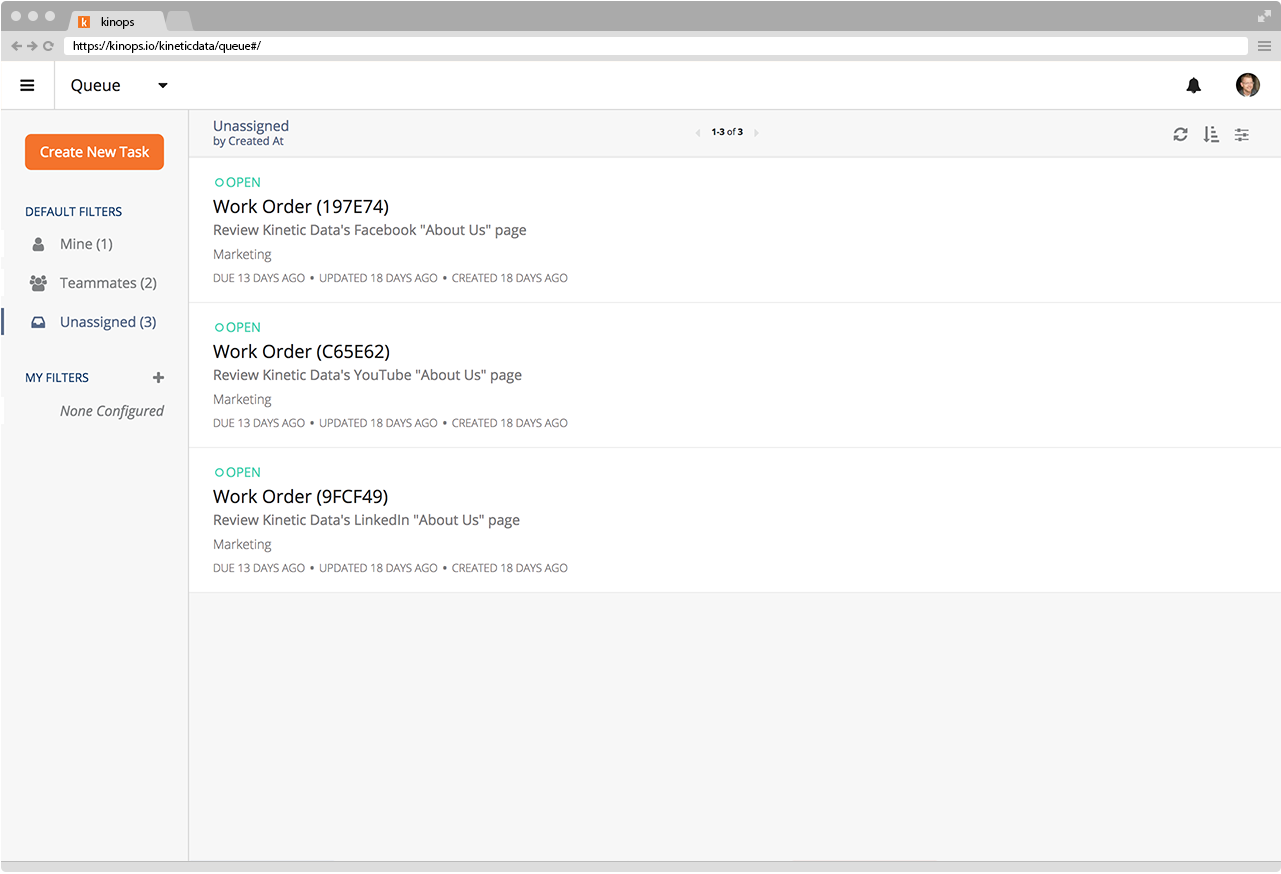Introduction
Welcome to Kinetic!
What is Kinetic?
Kinetic Data provides an enterprise workflow platform for building highly scalable and complex apps in record time. We combine the best of low-code and pro-code development to enable the world's top organizations to achieve their digital modernization goals.
Think of the Kinetic Platform as the plumbing - all of the common stuff that's needed to build an application at enterprise scale. This includes things like authentication, users and groups, data storage, security and permissions, error handling, integrations and user interfaces.
We also bring the environment. Our architecture is designed specifically for enterprise scale. Embedded in our stack are technologies like Cassandra, Docker, and Kubernetes which ensure that the platform can grow with an organization as usage expands.
With the Kinetic Platform connecting all of your departments, requests can be handled more efficiently, no matter which systems a department uses.
Kinetic solves the problems IT cares about and enables your business to concentrate on what provides real value.
How Kinetic works
Kinetic Data believes in making both hardcore and citizen developers heroes within their organizations. Our approach is to provide a framework for your existing developers to build highly configurable, low-code widgets and integrations using open languages like Javascript and Ruby.
Provided widgets and widgets you build in Kinetic are designed to be shared throughout the Platform with citizen developers, who then assemble these pieces into functional, scalable, and secure applications – enabling the people closest to the problem to provide a solution and improve it over time.
With the Kinetic Platform, you get the building blocks necessary to create business applications that are wicked fast, highly scalable, and secure. We've been at this for 20+ years and have distilled the apps we've built down to these primary components:
Workflows
When you think about it, most business apps are just a big collection of workflows. First a user logs in, then something happens. Then the user submits a web form and something else happens. Some workflows can be simple, like sending an email notification. Others can be more complex, like fetching data from multiple systems, transforming it, evaluating some logic, and then performing an action based on the outcome.
Workflows in Kinetic provide a framework for creating flexible, automated business processes that can be improved over time by non-developers using our low-code drag-and-drop designer.
Each step within a workflow is provided a set of inputs that perform an action, then return a predefined set of outputs that can be leveraged to make business decisions once complete. These steps can be provided by Kinetic Data or built and customized by your developers for use within the Platform.
Kinetic Workflows can also use more complex functionality like looping, recursion, data manipulation, and string interpolation. Additionally, advanced business logic can be expressed using the Ruby programming language, so there is virtually no limit to what logic you can perform.

Example workflow that creates an Issue in Jira and sends a text message with the resulting Issue ID
Forms
Forms are the primary data storage mechanism within the Kinetic Platform. Forms are used to collect, validate, and store data from end users and workflows. You can even pull data from other systems and store it in Kinetic.
Forms are created and maintained using a low-code drag-and-drop designer. You can configure fields that define the type of data being collected (such as text boxes, drop-down lists, dates, and so on) as well as other metadata like whether field is required or whether it was visible.
Like all Kinetic Platform components, you can use custom JavaScript, CSS, and HTML to enhance the look and feel of Forms, or to write custom validations to ensure clean data is being captured.
How are forms in Kinetic used?
- UI/UX interface that end users interact with to submit data into a workflow
- Table / database that stores data which can be leveraged within a workflow

Kinetic Platform Form Designer
Portals
Portals make up the end user experience when interacting with an app built on the Kinetic Platform. Portals are built using ReactJS and can be fully customized to meet your projects exact needs. Developers have full control over theming and branding, navigation and layout.
Kinetic Portals leverage the Kinetic Platform's API's to gather data and draw it up within the end user's browser.
Kinetic Portals leverage the Kinetic Platform's APIs to gather data and draw it up within the end user's browser. For example, you can create a portal used for the collection of forms that can be submitted by end users. The portal would query the Kinetic Platform's Forms API to retrieve a list of forms and present them to the user. Eventually the user navigates to a form (built using our Form Builder), which gets rendered inside the portal.

Develop tailor made, pixel perfect portals using your favorite libraries.
As another example, a portal can display a list of records that need to be filled out by the user, such as a list of tasks that need to be completed. In this case, the portal would query the Kinetic Platform's Submissions API to retrieve a list of relevant submissions and present them to the user in a table.

A list of tasks to be completed by end users, rendered inside a Kinetic Portal.
Integrations
Integrations are critical to the successful introduction of low-code platforms that enable digital modernization within large organizations. No apps exist on an island. They need to work with the larger ecosystem – especially when you start getting major adoption.
All integration plugins within the Kinetic Platform are built to a standard specification that defines a set of inputs, outputs, and connection information. These plugins are built using code so that they can be battle-tested and distributed confidently throughout the Platform .
Can the Kinetic Platform integrate with my __ fill-in-the-blank__ system?If the system you want to connect with is accessible by network either directly or via the Kinetic Agent, the Kinetic Platform can integrate with it... period.
The code that runs within a plugin can be fully customized to import libraries and SDKs, making them extremely flexible and able to work with just about any system. Plugins can be built to use any protocol imaginable like REST, SOAP, SNMP, RPC, and more. You can also call directly to databases with their "proprietary languages" using imported Java libraries. Oh, and if that's not enough, you can call a command line to reach into other systems too.
Once built, these integrations get packaged, tested, and imported into the Platform. Once connection information is configured, integrations can be used in a low-code fashion by non-developers inside of the Platform's Form and Workflow Designers.
Updated 2 months ago
